Why Lock Your Google Chrome Browser on Android Work Devices
If your business relies on Android devices—whether it's smartphones for field teams or tablets placed in retail stores—controlling how those devices are used is crucial for security and productivity.
At first glance, giving users full access to these devices might seem harmless. But in reality, it can lead to unproductive browsing, accidental data leaks, or even deliberate tampering with settings. In fact, 74% of data breaches in 2024 were caused by human error or misuse of access rights (Verizon DBIR).
If your work demands the use of only the Chrome Browser on Android devices, then Android Chrome Kiosk Mode can be your best bet. When paired with miniOrange MDM solution, kiosk mode lets you lock Android devices like smartphones, tablets, or rugged handhelds into a controlled, browser-only environment.
You decide which web pages can be accessed, how the interface behaves, and what device functions are locked down.
Everything else stays out of reach.
What is Android Chrome Kiosk Mode?
Android Chrome Kiosk Mode is a security feature where the Chrome browser on your Android device can be locked down into a secure and focused browsing environment with limited navigation and access. By controlling the browser experience, businesses can direct users to a specific URL and maintain a kiosk browser lockdown.
Main Purpose of Android Chrome Kiosk Mode
The primary goal of kiosk mode chrome browser is to restrict Android devices to a single, secure web-based task.
Why this matters:
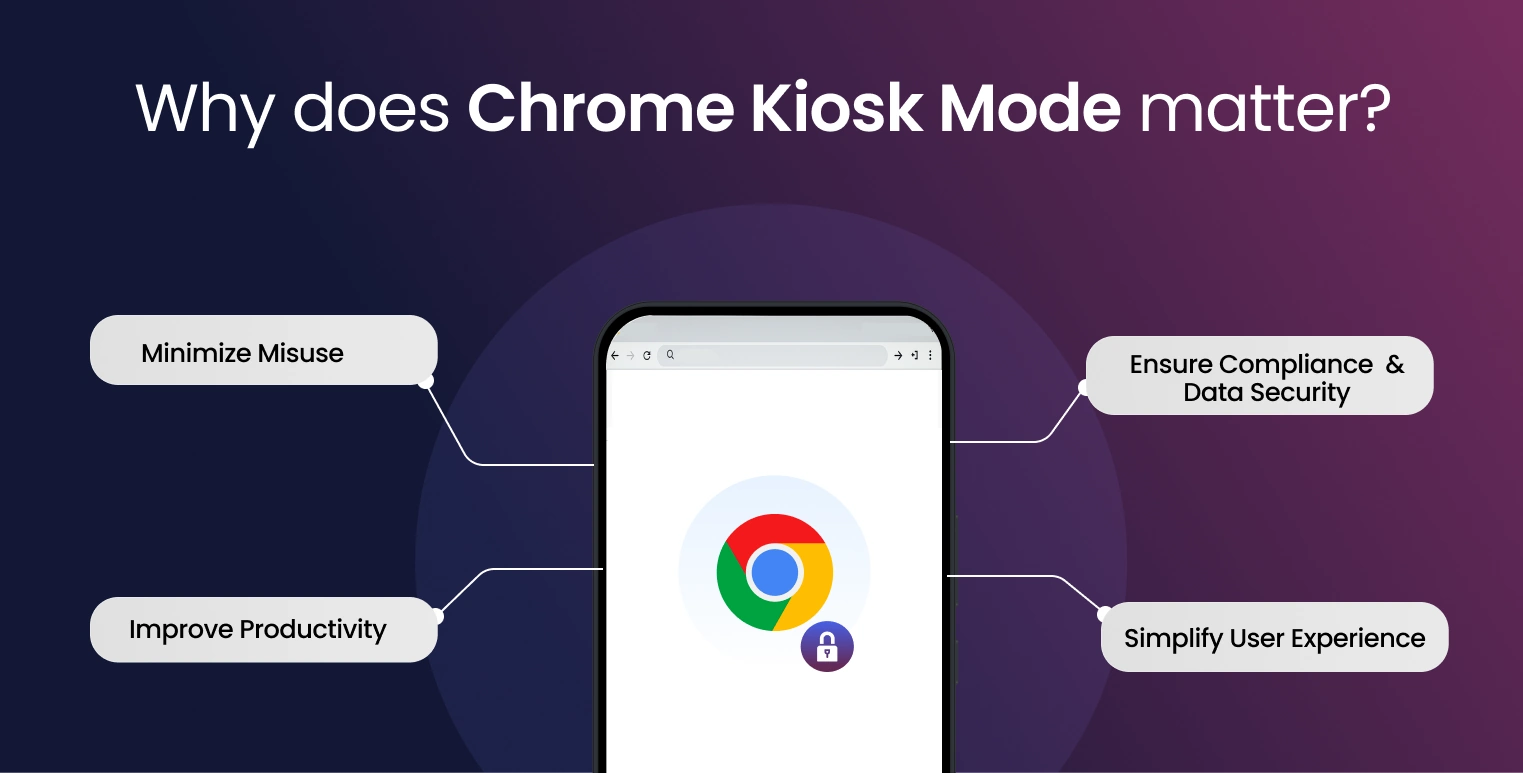
- Minimize Misuse: Android devices that are not managed can be misused to access things like social media, install third-party apps, or alter system settings.
- Improve Productivity: By locking users to a specific URL portal on Google Chrome browser, you ensure employees spend time on productive tasks. No more distractions or accidental app switching.
- Ensure Compliance and Data Security: Kiosk mode enforces strict browsing rules and data access limitations. This is essential in regulated environments like finance, healthcare, or education.
- Simplify User Experience: Android Chrome Kiosk Mode gives a clean, guided interface focused on one task. This is especially helpful in self-service kiosks and public terminals.
Key Features You Get with Chrome Kiosk Mode
When you configure Android Chrome Browser Kiosk Mode using miniOrange MDM solution, you get access to these powerful features:
1. Full-Screen, Single-App Lockdown
Once the device is powered on, Google Chrome automatically launches in full-screen mode—without showing the Android launcher, status bar, or notification shade. The user sees only your intended web app or homepage. This eliminates the possibility of accessing other apps, changing settings, or launching distractions. Great for self-service environments or dedicated business tools.
2. URL Whitelisting
You can whitelist specific websites or domains to restrict access to only approved URLs. Whether it's your company dashboard, booking platform, or digital form, everything else, YouTube, Facebook, external links, is automatically blocked.
3. Disable System Functions
miniOrange MDM solution lets you completely restrict device navigation and hardware buttons, so users can't break out of Chrome or access Android settings. You can disable home, back, and app Switcher buttons, pull-down notification bar; quick settings and status bar; and device settings and Wi-Fi options.
4. Remote Policy Management
With miniOrange MDM, you can create a kiosk policy once and push it to hundreds or thousands of devices remotely. Whether you're changing the homepage URL, adding a new domain to the whitelist, or enabling a new security feature, you only have to do it once in the admin portal. It's fast, centralized, and scalable.
5. UI Customization
miniOrange allows you to customize Chrome's UI like hide the address bar, block incognito/private browsing, prevent new tab creation and disable download capabilities.
6. Auto-Update & Real-Time Monitoring
Keep your fleet of devices compliant with automatic software updates. Monitor device usage, track violations, and see which devices are online or offline, all from a single cloud dashboard.
Real-Life Use Cases: Where Android Chrome Kiosk Mode Shines
Chrome Kiosk Mode on Android isn't limited to one niche. It's a flexible and go-to solution across multiple sectors. Here's how it brings value in real-world environments:
Education & Digital Learning
Schools can lock student devices to a single learning platform, avoiding distractions like social media apps or games. It ensures students stay on-task during assessments or interactive lessons.
Retail & POS Environments
Use tablets or wall-mounted screens to display product catalogs, gather customer feedback, or allow program sign-ups. Shoppers can interact only with your web interface—no accidental settings changes or social media browsing.
Field Service & Logistics
Logistics companies equip drivers and field agents with locked-down tablets that only access delivery tracking tools, job-specific portals, or digital route maps, ensuring compliance and better data security.
Healthcare & Patient Intake
Clinics and hospitals use kiosk-enabled tablets for patient check-in, digital consent forms or feedback. This ensures privacy, lowers human error, and speeds up service.
Hospitality & Tourism
Hotels can provide self-check-in/check-out screens or web kiosks where guests request services, amenities, or plan local tours, without needing staff involvement.
Step-by-Step: How to Lock Down Chrome on Android with miniOrange
Step 1: Enroll Your Devices
First, you need to enroll your Android tablets or smartphones into the miniOrange MDM portal.
- Log in to your miniOrange admin account
- Head to Devices
- Click on Enroll
- Use QR codes or Zero-Touch enrollment to onboard your devices
Step 2: Create a New Policy to Set Up Chrome Kiosk Mode Android
- Navigate to Policies → Create Policy
- Name the policy something like "ChromeKiosk."
- Navigate to App Catalog → Applications → Select Playstore Apps and add Chrome to the catalog.
- Select kiosk mode from the drop-down list.
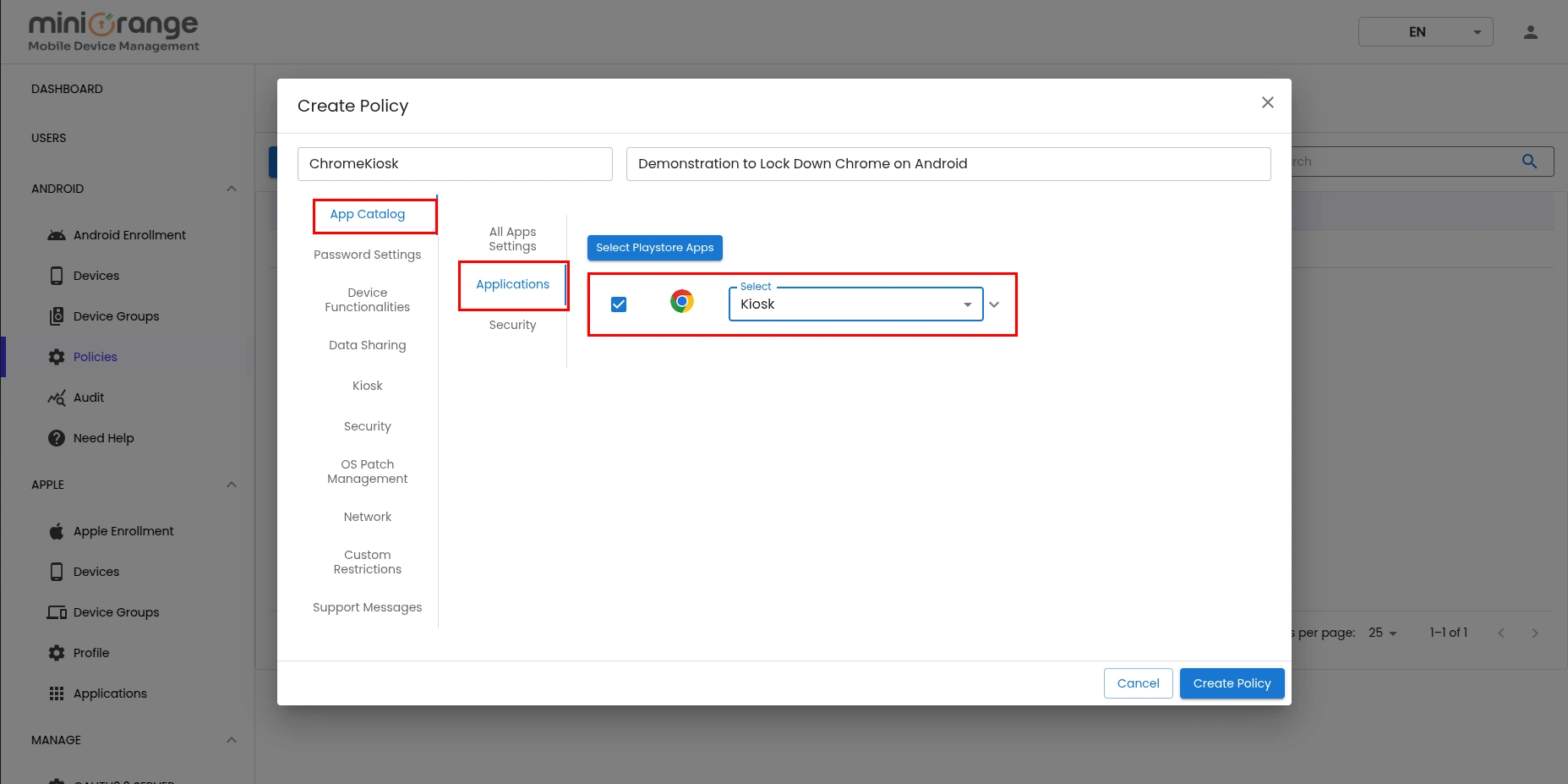
Step 3: Customize Chrome Behavior
Click on the toggle icon beside the drop-down list → Configurations, here you can:
- Set the default homepage
- Whitelist only approved URLs (everything else is blocked)
- Disable tab view, address bar, and settings menu
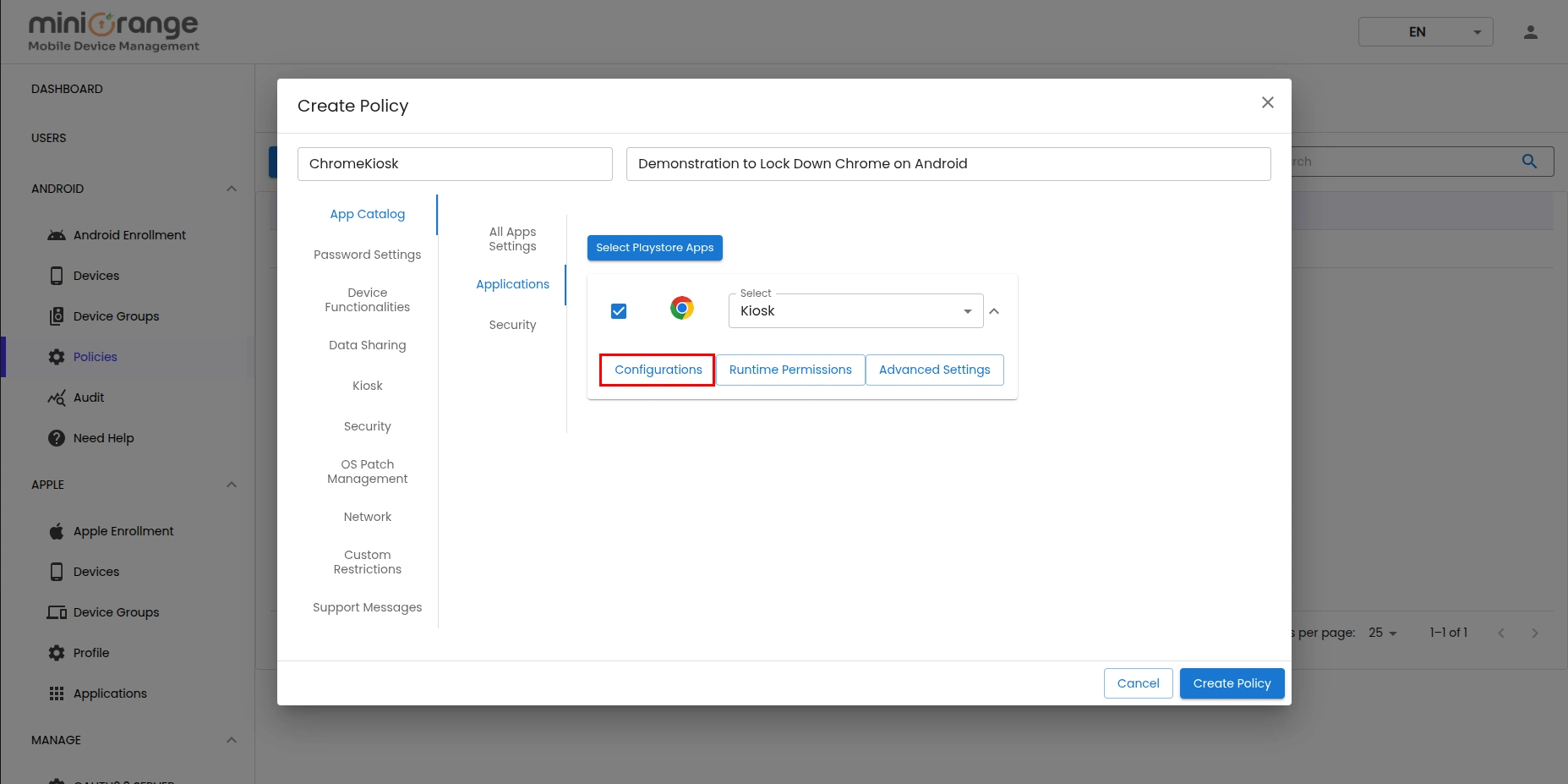

Step 4: Lock Device Hardware & Navigation
Still in the policy dialog navigate to Kiosk:
- Select Google Chrome from the Application Drop Down List.
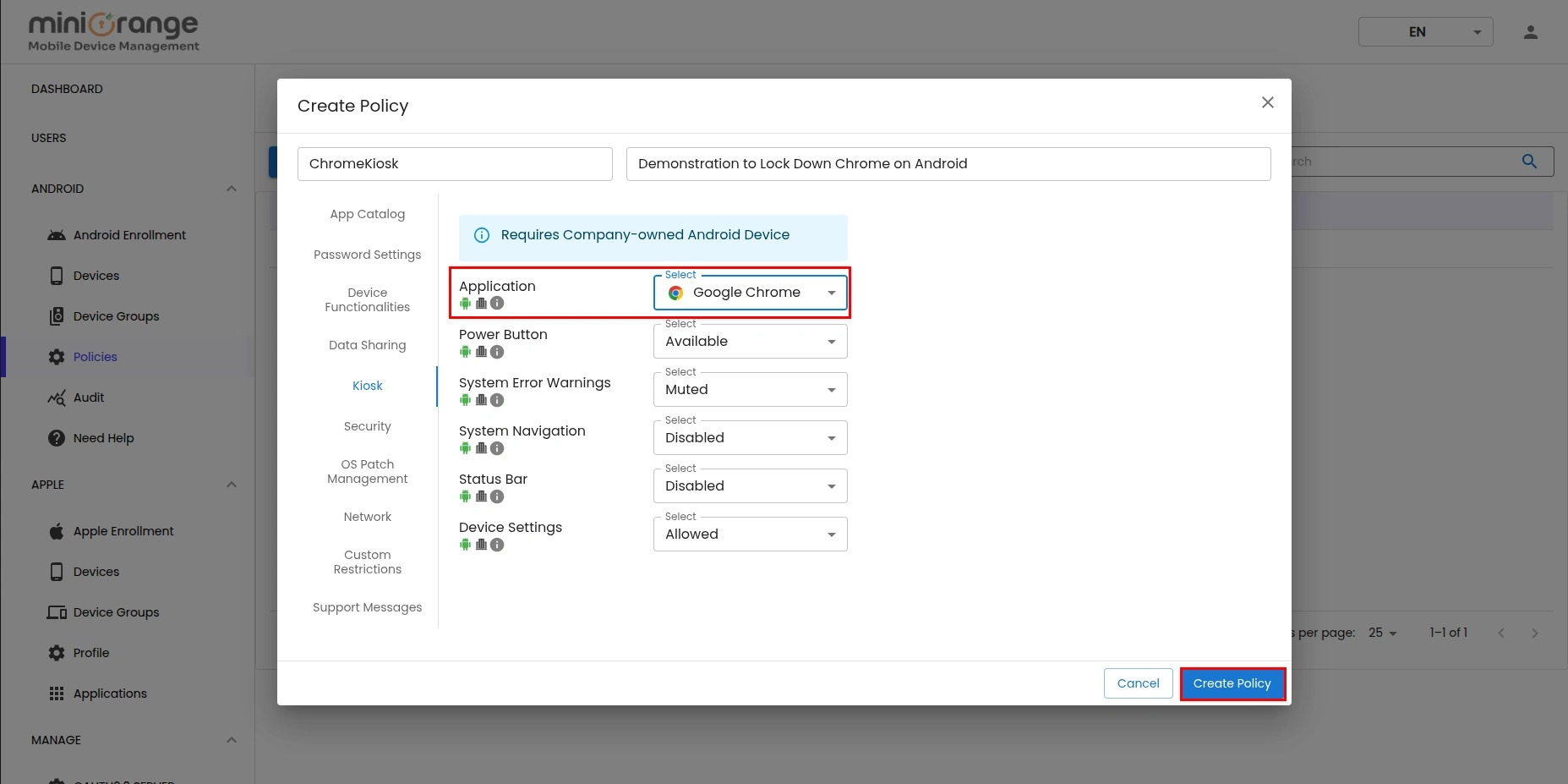
Step 5: Save and Push Android Chrome Kiosk Mode
- Save your policy
- Go to Device Groups → Add Group, and create a new Device Group for your policy.
- Go to Devices, select your enrolled units
- Push the new kiosk policy
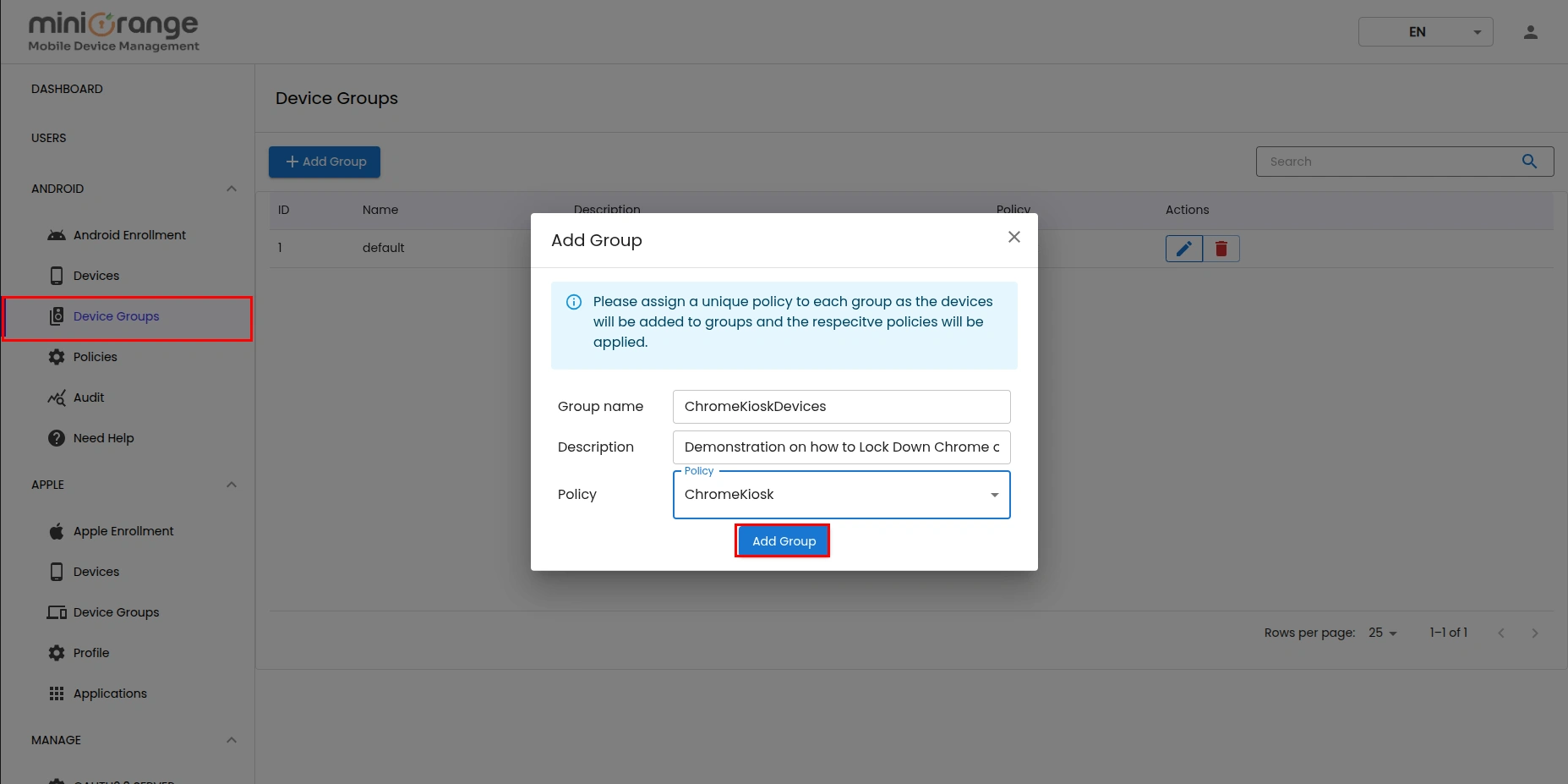
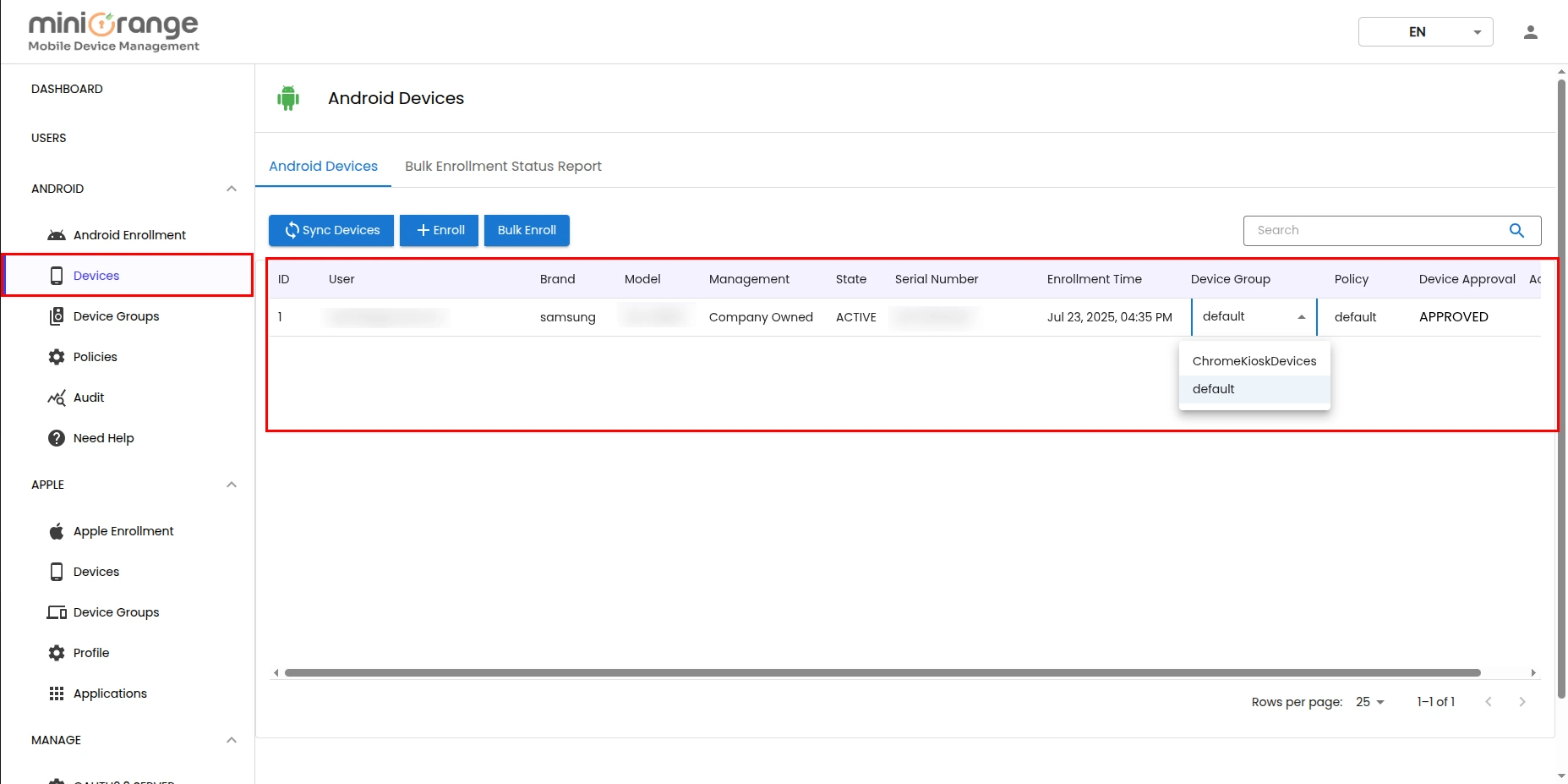
The devices will reboot or relaunch Chrome into full-screen kiosk mode instantly.
Conclusion
Locking down Chrome browser in kiosk mode on Android devices is no longer a luxury—it's a necessity for businesses that want streamlined, secure, and distraction-free user interactions.
Whether you're a growing startup or an enterprise with hundreds of devices, miniOrange MDM makes it easy to deploy, configure, and manage Android Chrome kiosk mode across your entire organization—remotely.
From retail check-ins to field SaaS access, from school tablets to self-service kiosks—miniOrange delivers control where you need it most.
Frequently Asked Questions
1. Can I exit kiosk mode locally on the device?
miniOrange MDM solution only allows authorized administrators to exit kiosk mode after set up Chrome kiosk mode on Android. The exit options are protected through secure authentication, either via admin credentials entered directly on the device or remotely through the MDM dashboard.
2. Who would benefit from using Chrome Kiosk Mode on Android?
Google Chrome Kiosk Mode Android is ideal for any organization in the educational, retail, logistics, IT and healthcare sectors that needs to simplify and secure use of Android work devices.
3. Is there a built-in kiosk mode in Android?
Yes, Android includes features like Screen Pinning and Lock Task Mode, which offer basic kiosk-like functionality. However, these options lack remote management, don't support whitelisting URLs, and can't fully restrict device access which are provided by miniOrange MDM solution.
4. Which kiosk software works best with Android tablets and smartphones?
For enterprise use, miniOrange MDM solution with Android tablet chrome kiosk mode is the best option, as it allows centralized configuration, remote updates, kiosk policy enforcement, and real-time monitoring. It's scalable across thousands of Android devices—making it ideal for businesses with a distributed workforce or multi-location operations.
Additional Resources
- What is Mobile Device Management (MDM)? | Securing Mobiles for Office Work
- How to enroll iOS Device in miniOrange MDM Solution
- How to enroll Android devices into miniOrange MDM
- Top 10 Benefits of Mobile Device Management (MDM) for Businesses
- Bring Your Own Device (BYOD): Pros & Cons for Businesses in 2025
- MDM Containerization: How it Protects BYOD Devices at Work


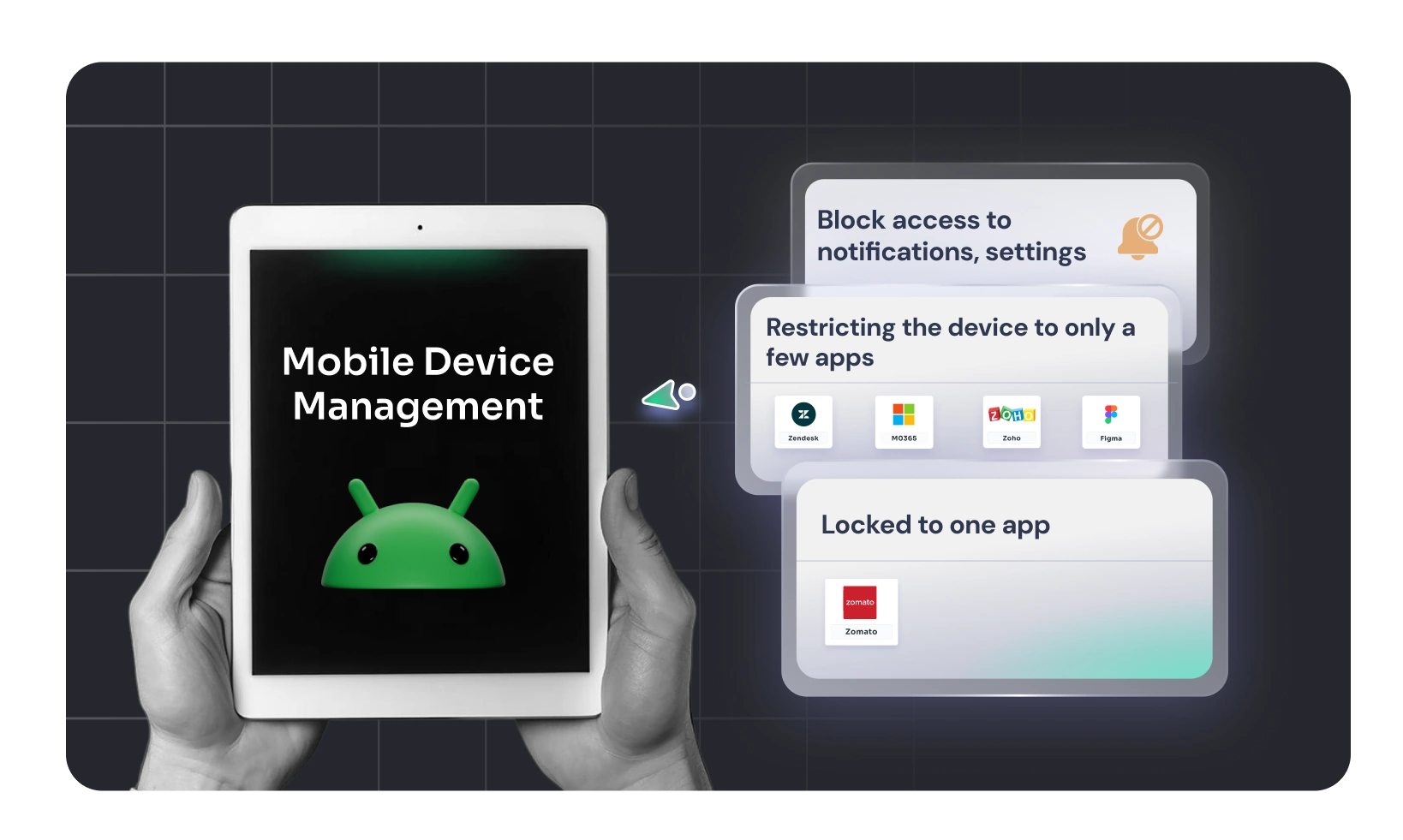
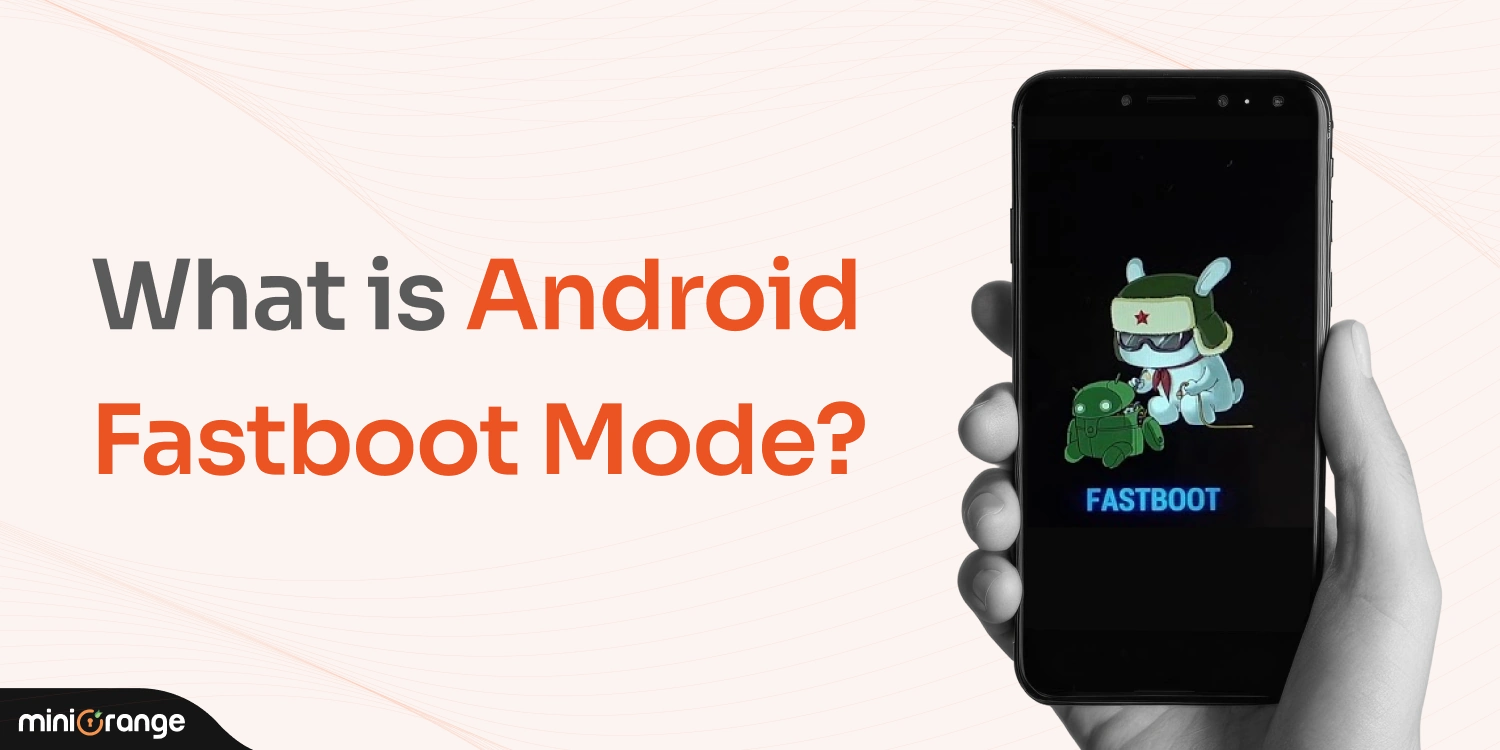
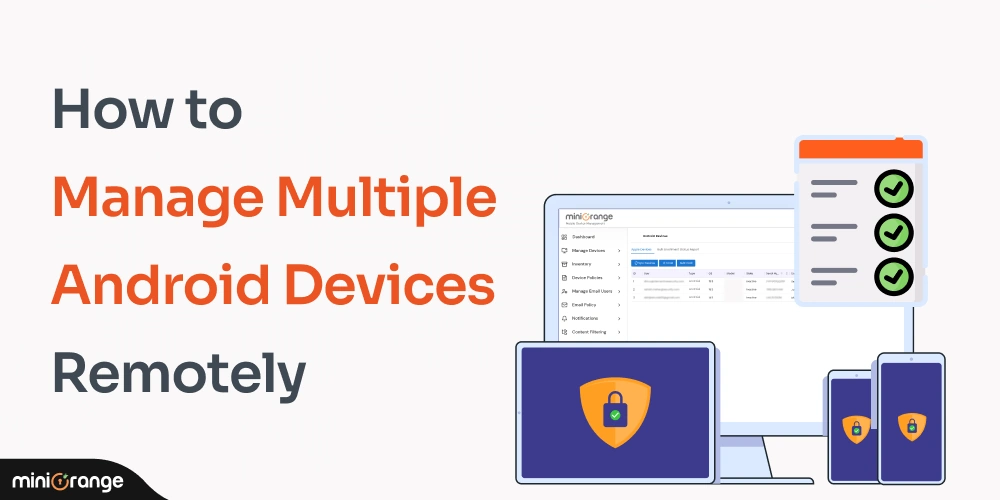

Leave a Comment